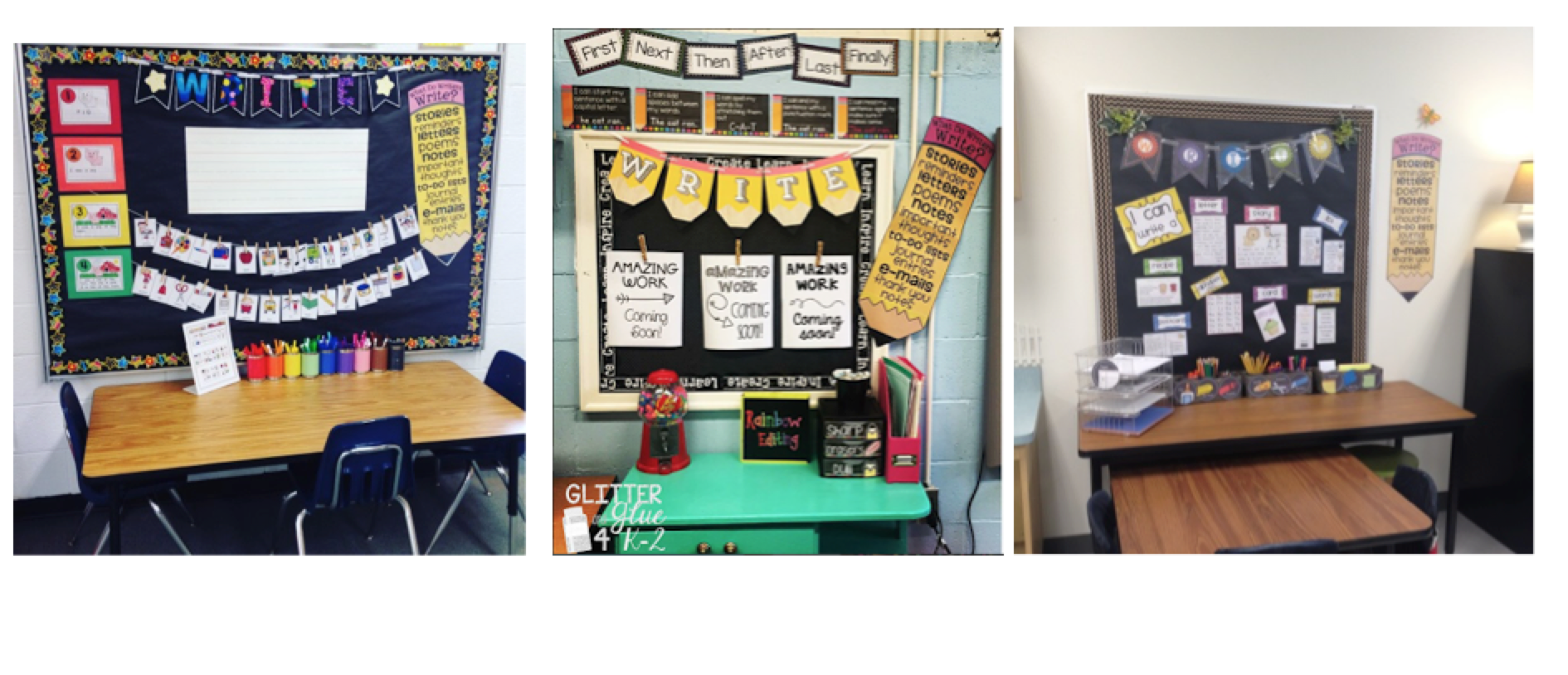Creating a Writing Inspiration Station
/There’s nothing like the dreaded feeling of sitting at your desk with a blank sheet of writing paper staring back at you. You see some of your classmates busily jotting down ideas; you see them creating their prewriting map; or you see some classmates looking upward with a pleasant grin, lost in their imagination. Not you though; your white paper just taunts you with thoughts like these: “So, what are you going to write about this time?” or “There’s nothing to write about; you’re all out of ideas!”
For some students, it’s very challenging and even defeating to come up with an idea to write about. As teachers, we know how valuable the process of writing is, but our students may not. The process of writing is already a lengthy and sometimes scary journey for many of them. I believe it is important to create a writing experience in which students can be inspired and where they will feel comfortable enough to take some writing risks. Create a new writing vibe in your classroom by setting up a Writing Inspiration Station.
The purpose of a Writing Inspiration Station is to help your students experience how special the process of sharing their voice in the written form really is. The level of comfort a student feels when they know how to write a paragraph, an essay, and write for all purposes is empowering! The station acts as a quiet place where a student can sit to gain inspiration or to work through the Writing Process. It can be that special place where a student might spread out and really engage with their writing.
The Writing Inspiration Station needs to be set up so that your students want to do their work there. For instance, it needs to be warm and inviting. Ideally, organize the station with a table and a few chairs. Stock it with all of the writing essentials—paper, pens, pencils, pre-writing maps, writing outlines, dictionaries, thesauruses, a soft light, and a Shurley English Writing Folder.
In addition, create a bulletin board adjacent to the table so students can easily review writing tips, transition words, Power Words, steps in the Writing Process, or writing samples. For those kiddos with writer’s block, add a small bucket of writing prompts for each genre of writing to help inspire them. Change it monthly, align it with the genre you’re currently teaching, and use it as your Teacher-Student Writing Conference space; the ideas are endless!
Use your own creativity to set up a unique Writing Inspiration Station, and see how your students thrive with the new writing vibe.
BONUS: If you’re looking for some extra writing prompts to get you through the year, try these!
FIRST LINES/LAST LINES
Think of a story that might begin or end with one of these sentences:
Today, I got the phone call.
Heidi dropped the last of her photographs into the trash.
Why wasn’t I surprised that the light switch didn’t work either.
I hoped they remembered the old adage, “Don’t shoot the messenger.”
One of these days, I’m going to say no.
I knew that sound. Dragons.
I thought space was supposed to be silent.
Who’s that woman in the photo?
Two years ago, I swore I’d never come back here again.
It’s not unusual to find odd bits of paper tucked into library books for a bookmark, but this time it was a letter.
Some jokes just aren’t funny.
“Moon Base Epsilon failed to report, sir.”
We heard the approaching horses (car) and hurried further into the woods.
I was not ready to admit defeat.
“This is the last straw!”
Josh looked guilty.
Maria looked up from her reading and her book fell from her lap.
I’d always wondered what real fear felt like. I was sorry I found out.
Monday was supposed to be the worst day of the week. Today had it beat by a mile.
We all felt the cold before he entered the hall.
First Lines/Last Lines Source: http://www.wrightingwords.com/writing-starters/





































































































